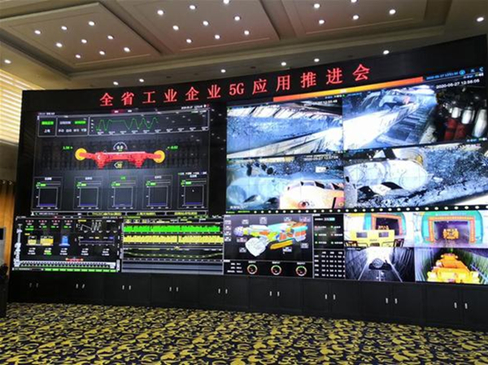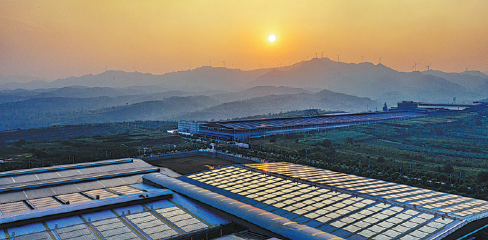Shanxi sees achievements in energy reform
Updated: 2022-03-15

5G technology is applied to intelligent coal mining in Shanxi. [Photo/Shanxi Daily]
North China's Shanxi province has researched the implementation plans for peaking carbon emissions, strengthened energy consumption controls, optimized the energy structure, and promoted the technological transformation of energy conservation and carbon reduction since 2021, reducing annual energy consumption per unit of GDP by 3.2 percent.
Last year, Shanxi completed the coal supply guarantee task issued by the State and promoted the transformation of traditional advantageous industries, with the proportion of advanced coal production capacity exceeding 75 percent.
Intelligent coal mining has been progressing steadily. The first 10 demonstration intelligent coal mines have been completed, construction has started on 1,000 intelligent mining working faces, and 21 coal mines have received 5G coverage. The province has promoted green mining in 40 local coal mines.
Shanxi has also promoted the large-scale development of new energy. In the past year, grid-connected wind and solar power generation increased by 2.04 million kilowatts, and the development and utilization of clean energy such as hydrogen energy and geothermal energy has made progress. Shanxi's new energy and renewable energy installed capacity accounted for 34.3 percent of the total.
"New energy + energy storage" pilot projects were carried out as well. The cities of Datong, Shuozhou, Xinzhou and Yangquan have prepared more than 10 percent of energy storage facilities for new energy projects, while Hejin's and Puxian's pumped-storage power stations have been included in the national 14th Five-Year Plan (2021-25) construction plan.
In addition, the province encouraged new energy power generation companies to participate in electricity market transactions, expand new energy consumption by 10 million kW, and complete the State-issued target in renewable energy power consumption.

With photovoltaic panels installed on rooftops, a solar farm in Yuanqu county supplies clean power to local grids. [Photo by Xue Jun for China Daily]
The iron and steel, chemical, coking, non-ferrous metals, and building material industries, as the most energy intensive industries in the industrial field, have long been the focus of energy consumption control work in the industrial manufacturing field.
Provincial authorities have formulated special plans to make the five aforementioned industries more energy-efficient, sorted out 38 advanced energy conservation technologies, focused on promoting the construction of energy conservation projects in the five industries, and arranged detailed annual energy conservation tasks for enterprises and processes.
"The control of energy consumption in key industries in the resource-dependent province will stimulate the transformation and upgrading of energy-intensive traditional industries, accelerate the rapid development of more energy-efficient emerging industries, promote the clean, low-carbon, safe and efficient use of energy, and improve economic growth quality," said Li Feiguang, director of the energy conservation division of the Shanxi Department of Industry and Information Technology.
In 2022, Shanxi will further accelerate industrial transformation and focus on promoting the intensive development of its traditional advantageous industries.
It will increase advanced coal production capacity, promote the intelligent transformation of coal mines, and accelerate the construction of 5G-based smart mines.
Meanwhile, the province will promote the development of new and renewable energy, and enhance the stable and safe supply of new energy.



